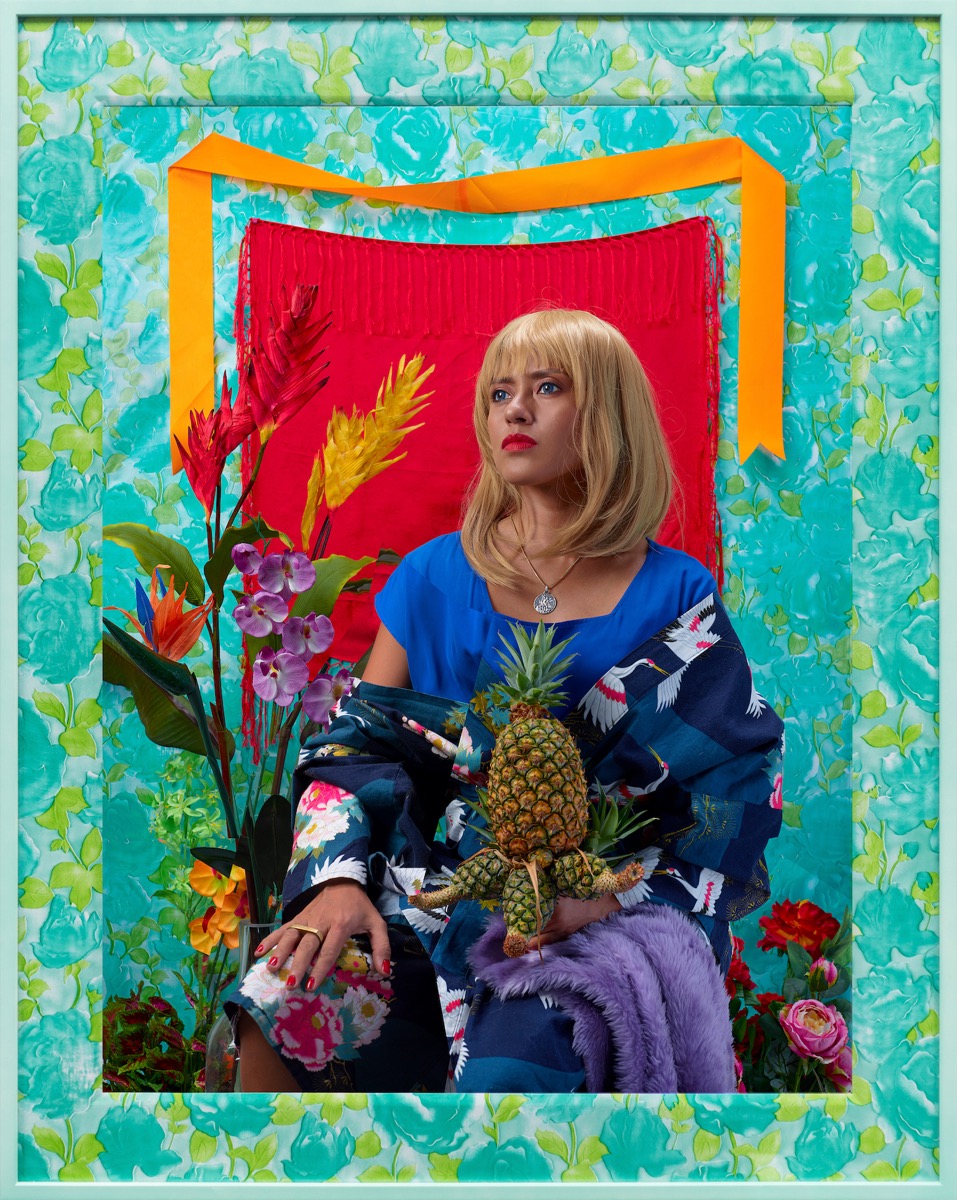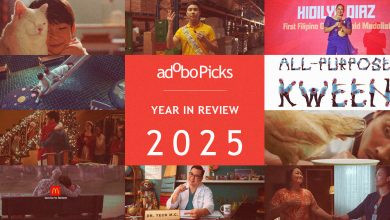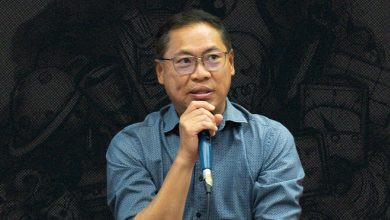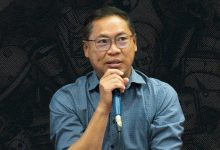Self-portraits have been a recurring theme in Wawi Navarroza’s twenty-year practice, but this is the first time we’re seeing an exhibition solely focused on herself. With this show, the artist goes full circle and looks back at different periods that marked her growth as an artist, a woman, a human.
adobo magazine sits down with Wawi Navarroza to discuss her latest gallery exhibition at Silverlens Galleries titled Wawi Navarroza: Self-Portraits & The Tropical Gothic, what Tropical Gothic means, and what it entails to be a Filipina contemporary artist in this modern-day setting.

How did tropical gothic come into your vocabulary and where did you first hear of it?
I encountered the phrase tropical gothic upon reading Nick Joaquin some years back. As a Filipino, the things that didn’t fit, tropical gothic provided the container for that where everything could be read in a way that it could make sense because that’s our particular pastiche as Filipinos. With Nick Joaquin, he coined that phrase to describe a form or work that has elements of syncretism in it. Syncretism just means a combination of things that are opposite of each other or kind of from our post-colonial Spanish past, our roots with Mysticism and our pagan roots. There’s also something of our Hollywood influence from the Americans when they were here. Our daily lives right now, sometimes it’s really difficult to grasp and to understand how absurd it could be with our politics, absurd to the point [that] it’s kind of unbelievable and there’s also a tinge of humor about all these.
For me, that’s the tropical gothic, it’s not a particular specific thing, but it’s a way to describe the miasma and the wildness of it all. And also for me, putting it face to face with self-portrait, it’s in relation to the tropical gothic is to affirm where I’m from, and also the aggregate experiences that I took with me as I lived my life as a practicing artist so that’s what this exhibition has put together.
First time I met you, you were doing an exhibition on the marble industry in Romblon, and that was you behind the camera. What made you decide to come back and be the subject of your own works?
It’s quite curious because I started photography as part of a communication arts program and my mentor was Judy Sibayan, a conceptual artist. I couldn’t find a subject at that time to express a more psychological exploration. And I thought the self was such a fascinating creature to study and as an artist.
When I finally started being a full time artist, I went on a trajectory from the dark room and I started going on residences and living abroad for a certain time and here and there so the view was external and I was looking at the world, bigger than the self or outside of the self so I explored ideas, I explored landscapes, what it is to be looking at a place in relation with photography because both are always tied to the hip. I realized that contemporary landscape had to do with not looking at the postcard in front of you but looking at where you are, where your foot is planted, where you stand, basically.
In 2019, I decided to come back to showing self portraits as a way to introduce a full circle from where I started. I remember my mentor telling me when she saw my landscapes, she said, “this is all self-portraits.” I did self portraiture as markers for specific times in my life where I found myself confronting the humanness of me, faced with natural disasters, faced with disease, faced with something that I would equate to something starting from zero. There’s one after the fire, there’s one after dengue, there’s one after loss, when I was living in Spain where I lost everything in terms of work and starting from zero. There’s a cycle that goes from destruction to creation to destruction to creation throughout the work in my autobiography I think but I didn’t want to tell it in a diaristic way; I wanted to encase it in more or less allegories, and using the “tableau viva” format, which is like translated to photography. That’s what, I would say, a look into the past and also affirming the present and kind of getting ready for a feature that doesn’t see the difference between landscapes and portraits.

It’s curious how you staged the portraits because they look like performances. Also, I noticed the little anomalies: the cut and paste, the DIY. Why did you decide to put those elements in?
The bottomline for me here is to not be too caught up with the medium, saying this is a work in photography. I’ve been trying to underline that for years: the work is a layering of creation, the process of creation and deliberate decisions to come up with a constructed image. It’s constructed in a way that it’s choreographed but it’s also skewed in a way that it’s not perfect. It’s made to question the flatness of the surface. In photography, we normally have the 3D perspective in photography, right? But with this, I deliberately flattened it to make it look like work that is cut and paste.
Every little thing is a statement. The artist is seen in different facets as somebody who’s a laborer, and the artist as technician, the artist as photographer, the artist as the composer, and finally the artist as magician. The last part of it is like a special sauce I can’t describe, it’s like the meaning maybe, layered on top of it all. Like these are not meant to look like professional sets, but these are more playful in a way.
Can you tell me about the colors and the textile that you picked. In a way they’re very kitsch but also something that we see predominantly in the Filipino setting.
Not that there’s something wrong with kitsch but it’s like to me, high chroma colors — just pushed to the bright and to the saturated. Before I used to think it was kitsch also but I think it’s another language we operate in because the sun is very strong and we can tolerate that kind of register to the eye. The high chroma that comes from the fabrics is rooted with our celebrations from our fiestas, from the costumes —everything that is high drama.
As you can see, one of the first things that hits your eyes is the colors and then the lines. I noticed this bricolage of different colors as you go to the market like Divisoria. You know, these little things like overcrowded with the consumer goods from our supermarkets, sari-sari stores, to the jeepneys. These are colors that we see everywhere, and then the Ukay-Ukay, the fabrics the patterns and then you go to the province, the textiles, the fruits. Everything seems to grow in this—because tropical, it’s lush. There’s a lot of fecundity when it comes to—when you say tropical. There’s this ‘too muchness’. We’re living in that soup, that kind of miasma of melodrama, which is particularly Filipino.
In a way, it’s also very Filipino. Filling everything up.
*laughs* Uncomfortably so! I don’t know why it’s like that but I guess there’s a lot of psychology why we do that also.
I think to depict the tropical or to depict where we are coming from here and now in 2019, we don’t belong in that tropical dream of just an island paradise.
Every photograph in their silence and their stillness has a lot to do with conflict also. Like there’s something; conflicting things going on in the picture: the natural and the artificial and also of self. How much of yourself is also empty in a self portrait—is to be fake bad? If you decide to encase it in fiction, are you making it real or are you making it this ambiguous ‘genuine fake’. It’s something to think about.

Touching on that, ‘Remember Who You Are’ is a more obvious piece pertaining to ‘genuine fakes’. It’s very interesting because throughout all the portraits, your hair is black and everything seems Filipino but in this work, your eyebrows are bleached, your hair is blonde but at the same time, it’s quite a familiar Pinoy image.
It belongs to a very specific Catholic iconography. I grew up as a Catholic in an exclusive school for girls and my first rockstars were Saints. I had these little pamphlets with saints in them and they would always be holding something. Sta. Lucia would have an eye on a plate or something. That’s just one of the references to this image but this particular piece I’ve thought about that otherness that I told you before. What is it if you’re not who you are in the eyes of others? What is it to be the bad representation of an Asian? But who says we can’t traverse our biological representation? Meaning it has a lot to do with genes or it has a lot to do with appearances.
I remember all these paintings that I’ve seen in the museums like very classic format—kings and queens. That’s totally alien to us because we don’t have that but this kind of framing, this kind of picture taking has been, we’re familiar with this because we are colonies. We have this in out database of images growing up here in the Philippines so you end up to be a strange fruit and I guess there’s nothing wrong about it in—it’s a sweet inside even though it doesn’t look like it belongs to here and there.

I want to talk about the other pieces as well. ‘The Heart Is A Lonely Hunter/The Self-Portraitist’ is a very beautiful portrait but it’s not as explosive compared to the others, color-wise. Also, I’m seeing two Wawis.
The lighting here is very Chiaroscuro, very formal tradition of historical art, kind of way. But the first reading, to me, is less explosive that but it’s an appropriation of a work by Federico Alcuaz, [a] Filipino National Artist for painting so I guess that’s like an easter egg there for people who know Alcuaz. I have a piece that he did in 1980, it’s the foreground and I layered another self, another me in the back. It’s like a little autobiography but also trying to show the artist as two sorts of dreamer: as a dreamer who does and as a dreamer who closes her eyes and looks inside, looking at outside creating very focused on the hands and laboring and the other one who looks inside and also, we see the figure here as the artist and as the figure as the muse so kind of like a mirror in front of the mirror. I wanted to finally bring the self portraitist into the photo as well.

And ‘Viva La Vida/The Heap’?
The prominent elements happening is a table still life that seems to cascade and it’s a burst of colors, a lot of surface, a lot of print and solids and you can even see for this whole exhibition but more so in this particular work — I had the image spill out of the frame which I used the actual fabric to extend from the photograph so the actual material so I’ve chosen this piece as some sort of a marker for my 40th year.
Why so?
Because I think, it shouldn’t be a shame for a female artist, you know, doing art. It’s some kind of elephant in the room: to work as an artist when you reach 40 is a marker year, it’s a way to look back and to look forward and then it’s also to understand that maybe the world is changing. I remember in one of my masters — a very successful artist — told us when my classmates were asking for tips to be successful contemporary artist, “If you’re a woman, you have to decide—the first thing is, you have to be famous before you’re 40 and the second one is, you have to decide if you want to be a mother or an artist.” And these are things that are real, that every female artist has to deal with at some point whether quietly or in public.
Do you think you have to make that option?
No, my life is a book that I write for myself and then every page is written by me and I guess the external factors that make it and it’s filled with colors and filled with life and little depths as you can see in here. There’s a structure in the middle and then there’s a lot to read, I think, that’s what’s nice about using elements in this format and the tableau format because it’s not just one thing. It’s not about illustrating what it is. It’s a multitude of doors that you could enter. There’s no one meaning. But for me I wanted it to mark a certain period in my life as an artist, as a person, as a female, as a Filipina, as Asian, as a human.
For more of Wawi Navarroza’s work, visit wawinavarroza.com, fb.com/studiowawinavarroza, or instagram.com/studiowawinavarroza.








